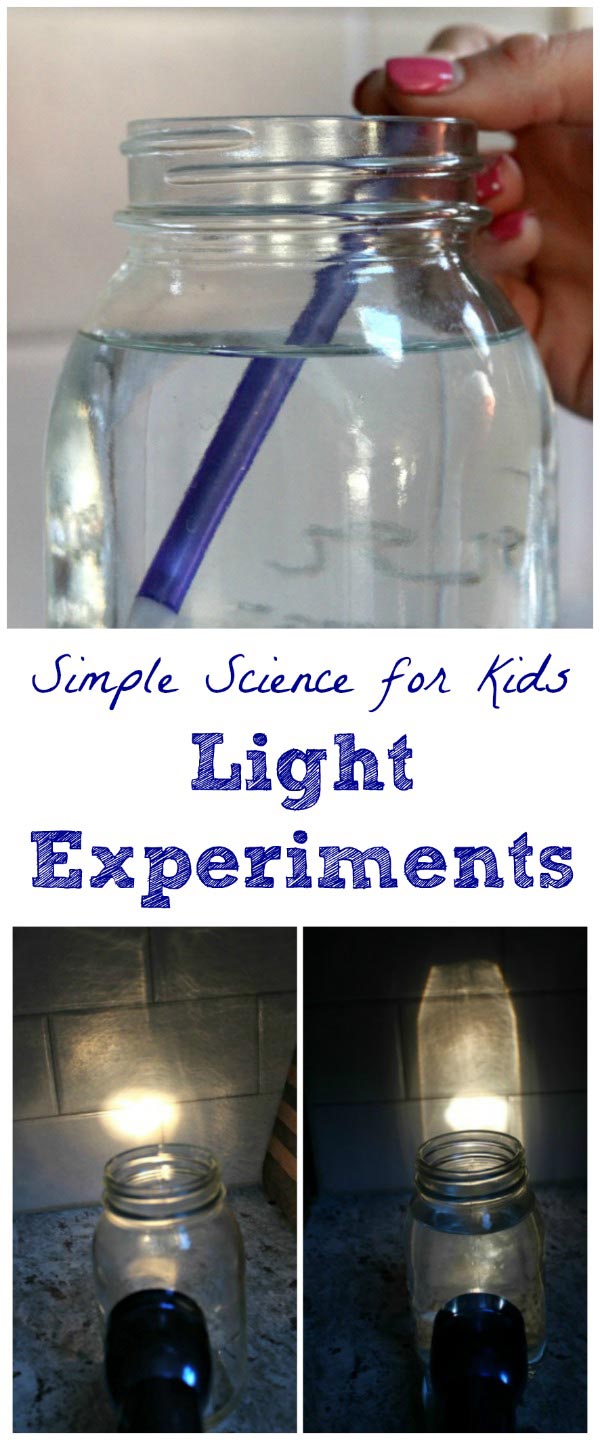Learn about refraction of light with this easy science experiment that can be done at home or in the classroom.
Our easy science experiments are back and this week, we’re adding a touch of ‘magic’!
In my experience, you can AMAZE kids with two types of science activities — the first type are those that show some behind-the-scenes phenomenon like this How Does a Leaf Breathe? experiment!
And the second type are those that seem to work like magic.
Today we’re going to play with that sense of wonder and highlight the science behind light refraction as we bend a pencil without breaking it!
Refraction & Light Experiments: Easy Science for Kids
In the 28 Days of STEM series, this week’s topic is STEM Challenges so we thought we would introduce a science challenge that ‘tricks’ your eyes.
Similar to our Optical Illusion science experiment, light experiments also rely on what our eyes see.
This quick experiment (actually 2) is so fun to do with kids, takes only 5 minutes and is SUPER EASY — all you’ll need is a pencil and a glass of water. We’re also including affiliate links to some great books and items we used for this experiment.
Since we always pair our experiments with books (it’s a great way to explain & extend the science 😉 here are a few of our favorites on light:
Light is All Around Us – a great introduction to sunlight, shadows and the speed of light. This is from a great set of early science books which always include a ‘Learn More’ section and easy experiments kids can do after reading the book. You can see all the books in this series here: Let’s Read & Find Out Science series for kids!
Explore Light & Optics with 25 Great Projects – includes a number of other cool activities and experiments kids can do with light! I love the Explore Your World project books — so many awesome themes & topics!
The Bending Pencil Experiment: Light Refraction
Step 1: Fill a drinking glass or glass jar with water.
We used a mason jar since all of our drinking glasses have an etched design in them. You’ll get the best results with a clear, glass container for this experiment.
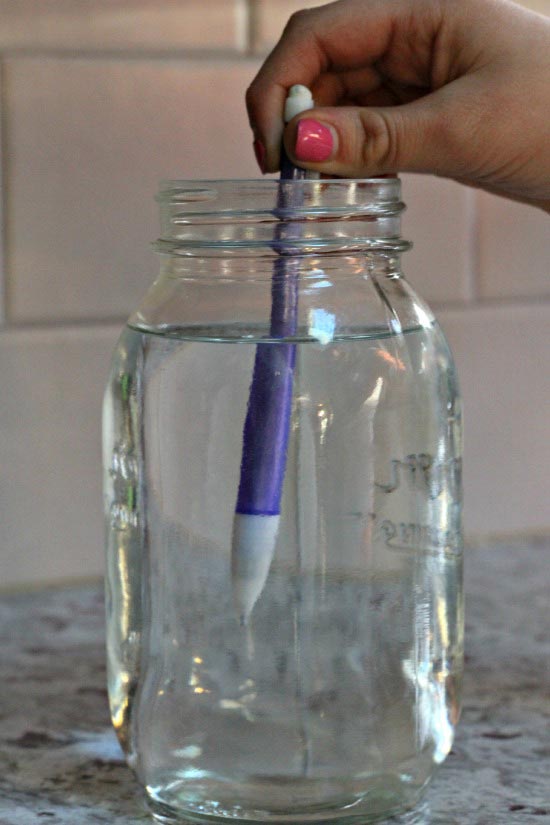
Step 2: Hold the tip of the pencil while inserting it into the water
You can already see that the pencil appears larger once in the water (as water is also a magnifier — learn more about that in this pine cone experiment ).
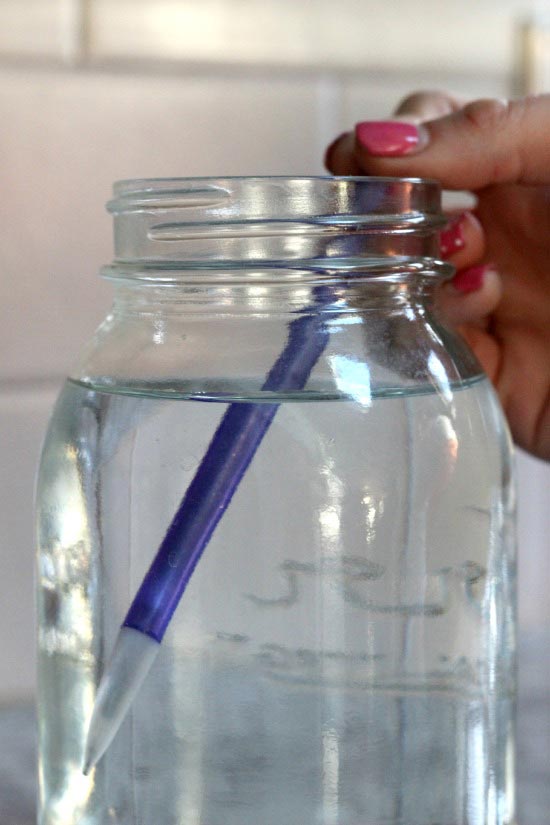
Step 3: Look at the pencil through the side of the glass or jar — did it bend?
You may have to lean the pencil closer to the front of the glass but you should see a distinct ‘break’ in the pencil when you peep through the side of the glass. As you can see above, the part of the pencil in the water appears to be shifted to the left of where you would expect to see it.
You can tell kids that this is an optical illusion — your eyes are being ‘tricked’ because the pencil still looks the same when you pull it out of the water.
Pretty darn cool, huh!?!
Here’s the science behind this cool experiment …
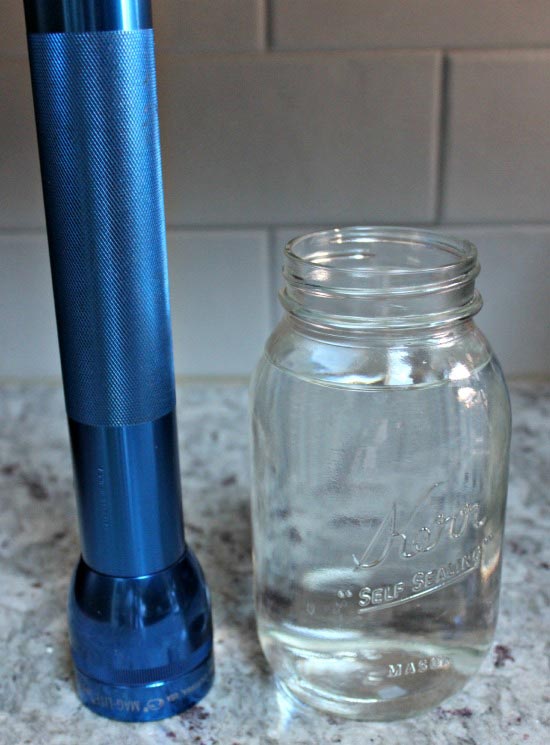
Why Does a Pencil Look Bent in Water?
Refraction is a physics concept that refers to how a wave travels through a medium.
In this case, we’re looking at how light waves travel through the air, through water and through glass.
Light waves travel faster thought air (which is a less dense material) than they do through water or glass (a more dense material). So as the light waves enter the glass and water, they slow down and bend into the water.
Since the light waves are no longer traveling at the same angle, this makes the pencil appear to ‘break’ when you look at it through the glass of water.
How Light Waves Travel through Water
We’re going to try a second cool science experiment: The Glowing Jar!
We’ll use a jar, some water and a flashlight to get an close-up look at refraction.
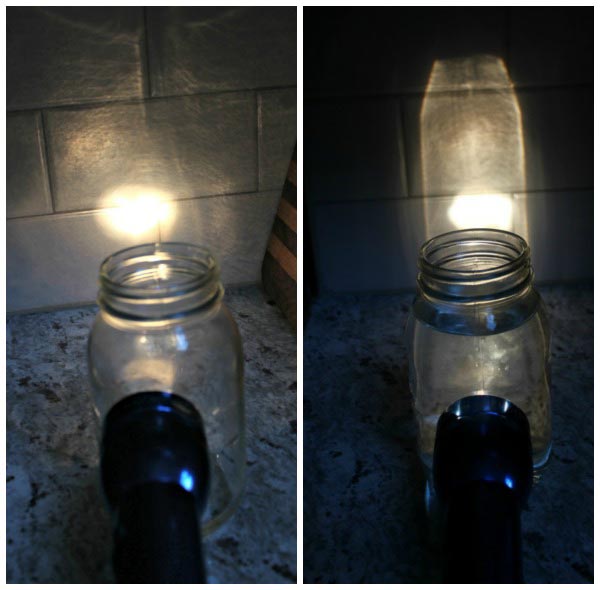
Let’s look at light waves without the pencil.
Since both the glass and the water are more dense materials than air, when you shine a flashlight into the glass (on the left), the light waves will slow down slightly as they enter and then return to normal as they exist the other side so you see one round spot of light.
However, once you add water to the glass (on the right), you can see that the light shining through the glass is more dispursed — now there is BOTH a spot of light and a ‘glowing’ outline of the jar showing on the wall due to how the light waves are refracting (or bending) as they travel through the water.
If you’ve ever been on a boat and looked over the side into the water, this explains why you can see so much below the water — sunlight is refracting (bending) to illuminate a wider area.
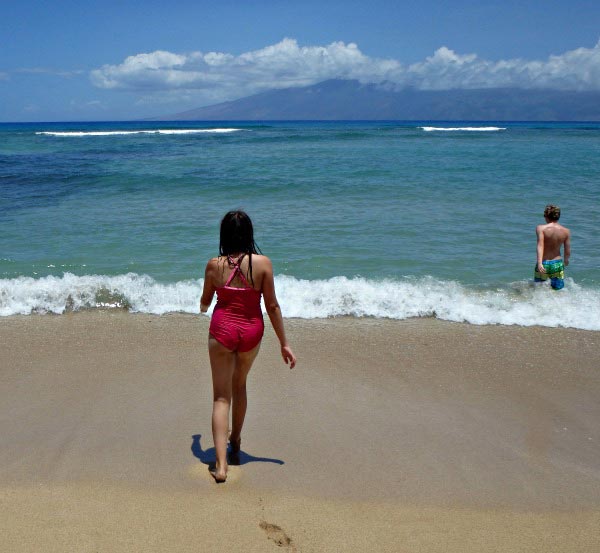
One way to explain this to kids is to think about running at the beach and into the water. When you run on the sand, you can move quickly because you are only running through air.
However, when you continue to run into the water, you will not be able to move as quickly because water is more dense and slows you down.
The same applies to beams of light — as they enter water, they slow down and can’t move as quickly.
If you want to see another refraction experiment, visit my friend Erica at What do We do all Day to see how they made an arrow change directions with a glass of water!
If you’d like to explore more with light science and optical illusions, a few fun items along with affiiliates links include:
ScienceWiz Light Experiment Kit
— hands-on science experiments that involve light!
The Book of Impossible Objects: 25 Eye-Popping Projects to Make, See & Do Craft Kit — a great activity book filled with optical illusations for kids to create!
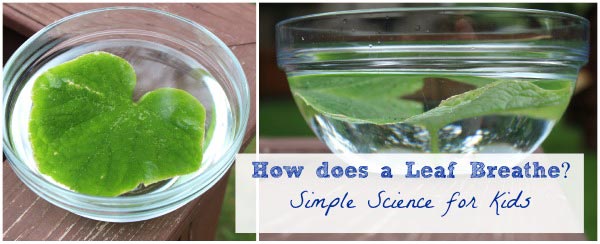
More Easy Science Experiments!
The Science of Sound: Create Your own Gong
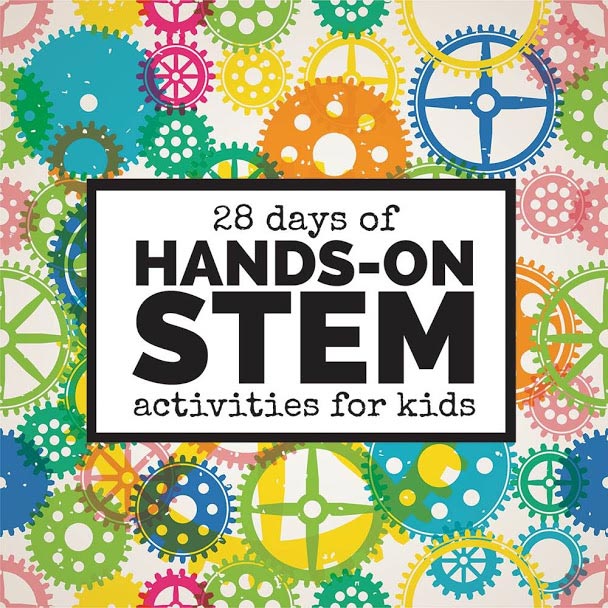
Be sure to join us for the 28 Days of Hands-on STEM Activities hosted by Left Brain, Craft Brain this month!
Every day, you can find new activities that cover science, technology, engineering and math perfect for kids from preschool thru middle school!

